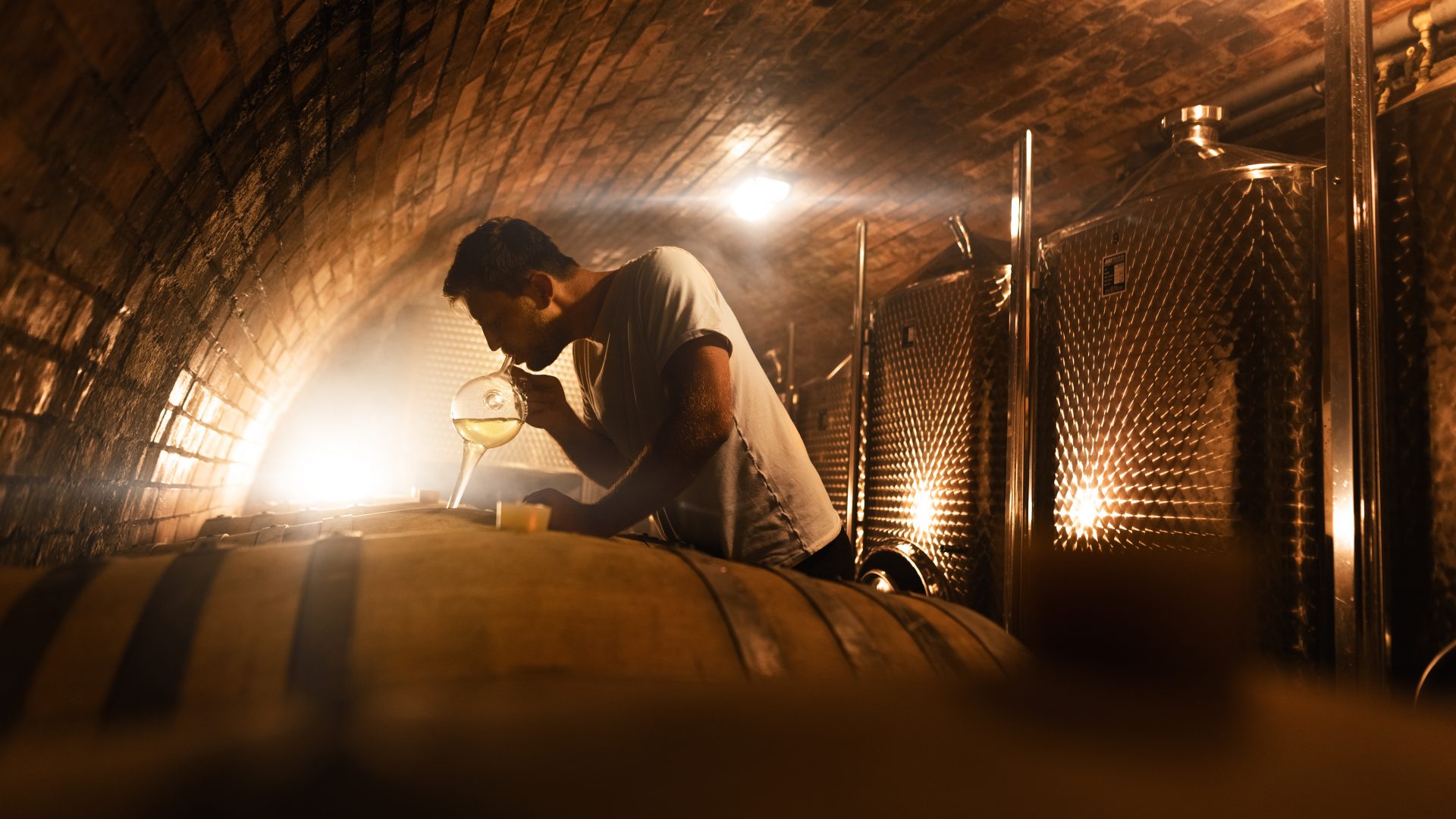After the harvest, the grapes are finally in the cellar and the winemaker's next shift begins. The berries must be separated from the rind and then finely ground or sent whole to the press. The must is left in a stainless steel tank for a day or two, so that the sediment settles. The pure must is then separated from the sediment and left to ferment in fermentation vessels. He continuously tastes it, evaluates sugar content and acid content. The winemaker is the real master of the whole process, he can add pure cultures of wine yeast to the must and control the fermentation at a temperature of 15 to 20 degrees. After finishing the fermentation, the young wine can be racked - it is separated from the yeast lees and transferred to the second container. It's all alchemy, the winemaker knows how to influence the residual sugar, alcohol and acid content with the bottling time. By staying longer on the yeast, it supports a deeper structure and fullness of the wine. On the contrary, if he wants lighter fruity aromatic wines, he must bottle earlier.
🍷 Rariga Winery
📍 Štúrova 95, Modra
📞 +421 907 199 110
By buying wine from the Lesser Carpathian region, you are helping winemaking families to preserve the winemaking tradition in the oldest and most extensive winegrowing region in Slovakia.




